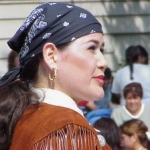What is your Hispanic country of Origin?
Nearly two-thirds of Hispanics in the United States self-identify as being of Mexican origin. Nine of the other ten largest Hispanic origin groups—Puerto Rican, Cuban, Salvadoran, Dominican, Guatemalan, Colombian, Honduran, Ecuadorian and Peruvian—account for about a quarter of the U.S. Hispanic population.
There are differences across these ten population groups in the share of each that is foreign born, citizen (by birth or naturalization), and proficient in English. They are also of varying age, tend to live in different areas within the U.S, and have varying levels of education, homeownership rates, income, and poverty rates.
The characteristics of the largest Hispanic origin groups in the U.S. are explored in ten statistical profiles, one for each country-of-origin group. Hispanic country of origin is based on self-described family ancestry or place of birth in response to questions in the Census Bureau’s American Community Survey. It is not necessarily the same as place of birth. For example, a person born in Los Angeles may identify his or her country of origin as Mexico. Likewise, some people born in Mexico may identify another country as their origin depending on the place of birth of their ancestors.
Each statistical profile describes the demographic, employment and income characteristics of a Hispanic country-of-origin population residing in the 50 U.S. states and the District of Columbia. The characteristics of an origin group are also compared with all Hispanics and the U.S. population overall. The profiles use data from the 2008 American Community Survey.
Then, what is your Hispanic country of Origin?







Trackbacks & Pingbacks
[…] This post was mentioned on Twitter by claudia havi goffan, claudia havi goffan. claudia havi goffan said: What is your Hispanic country of Origin? http://ht.ly/1JAdk […]
Leave a Reply
Want to join the discussion?Feel free to contribute!